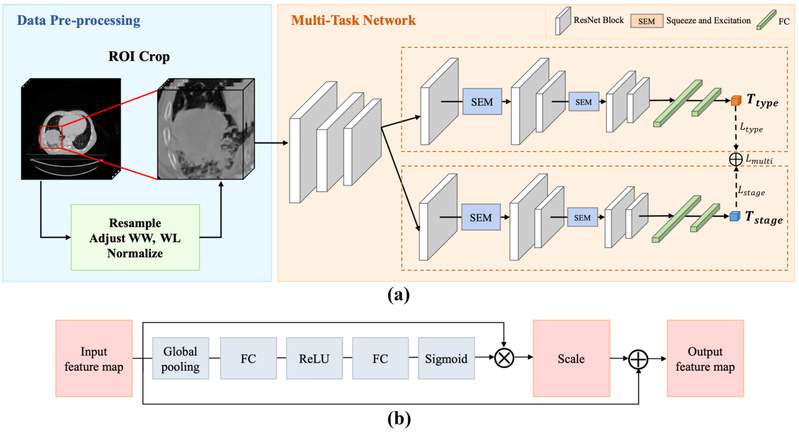

Multi-task learning-based histologic subtype classification of non-small cell lung cancer
Kun Chen, ManningWang†, Zhijian Song†
La radiologia medica (IF=6.313)
Purpose In clinical applications, accurate histologic subtype classification of lung cancer is important for determining appropriate treatment plans. The purpose of this paper is to evaluate the role of multi-task learning in the classification of adenocarcinoma and squamous cell carcinoma.
Material and methods In this paper, we propose a novel multi-task learning model for histologic subtype classification of non-small cell lung cancer based on computed tomography (CT) images. The model consists of a histologic subtype classification branch and a staging branch, which share a part of the feature extraction layers and are simultaneously trained. By optimizing on the two tasks simultaneously, our model could achieve high accuracy in histologic subtype classification of non-small cell lung cancer without relying on physician’s precise labeling of tumor areas. In this study, 402 cases from The Cancer Imaging Archive (TCIA) were used in total, and they were split into training set (n = 258), internal test set (n = 66) and external test set (n = 78).
Results Compared with the radiomics method and single-task networks, our multi-task model could reach an AUC of 0.843 and 0.732 on internal and external test set, respectively. In addition, multi-task network can achieve higher accuracy and specificity than single-task network.
Conclusion Compared with the radiomics methods and single-task networks, our multi-task learning model could improve the accuracy of histologic subtype classification of non-small cell lung cancer by sharing network layers, which no longer relies on the physician’s precise labeling of lesion regions and could further reduce the manual workload of physicians.
